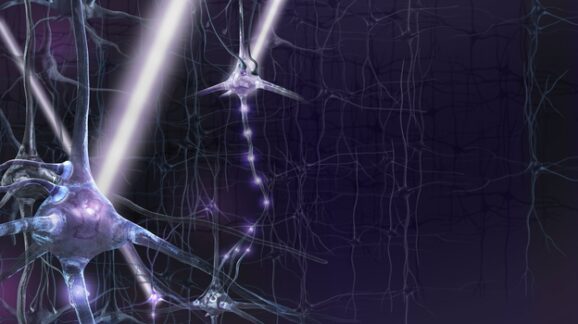Optogenetics Allows Scientists To Control Living Brains With Light
This article is more than 2 years old
 Earlier this year, we learned that light helps promote brain activity, and the Human Brain Project promises that other neurological insights and breakthroughs aren’t far behind. One of the tools scientists need in order to make progress in their understanding of the human brain and the treatment of brain disorders is a way to observe a working brain and to make purposeful tweaks to its function. Recent innovations in the field of optogenetics, the use of light to control brain cells, may provide one avenue to get to this.
Earlier this year, we learned that light helps promote brain activity, and the Human Brain Project promises that other neurological insights and breakthroughs aren’t far behind. One of the tools scientists need in order to make progress in their understanding of the human brain and the treatment of brain disorders is a way to observe a working brain and to make purposeful tweaks to its function. Recent innovations in the field of optogenetics, the use of light to control brain cells, may provide one avenue to get to this.
Until recently, MRIs were the best way to see a live brain in action and to observe which parts of the brains activate during certain tasks. Manually stimulating brain cells is tricky and requires wire probes. In 2005, a Stanford University research team announced their discovery that they could control activity with light. Over time, scientists have gotten better at identifying specific clusters of activity
While the method isn’t ready for human testing yet, it has been successfully tested in mice. Check out this video to see how a light causes the mouse to run. If scientists can identify the right neurons, they could potentially trigger specific feelings and different moods. Bring on the fearless super soldiers.
As simple as it sounds, there’s a lot more to optogenetics than just flicking a light switch on and off. According to Columbia University biomedical engineer Elizabeth Hillman, optogenetics fundamentally changes the neurons, given that most aren’t light responsive until genetic material is added to targeted brain cells. That is the catch. Scientists can genetically engineering the brain cells of mice, but not humans. Viruses are capable of reprogramming cells, but attempts to add genetic material by infection are risky, at best. Even when that part is all figured out, getting light to remote or deep areas of the brain presents a different challenge. Some cases have the opposite problem, light can become too diffuse or can activate too many brain cells at once.
While it may take a while to iron out all of the kinks with optogenetics , the development has already provided valuable insights on the brain. Epilepsy treatment is being revolutionized by the idea of controlling brain cells, and researchers believe that one day, seizures could be stopped with light. Other promising applications include treatment for addiction, depression, and a slew of other mental illnesses. Of course, one could then wield tremendous power with a flashlight, but surely there are worse fates.












